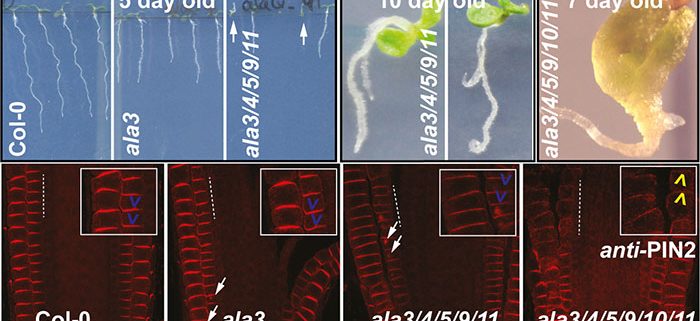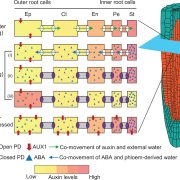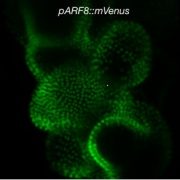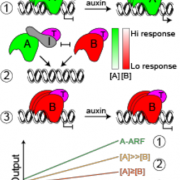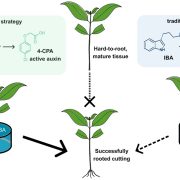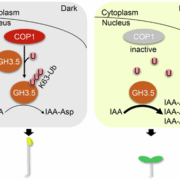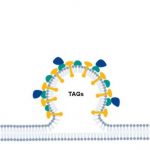Flippases Function in PIN Polarity
Zhang et al. elucidate the role of flippases in the polarity and trafficking of PIN auxin transporters. Plant Cell https://doi.org/10.1105/tpc.19.00869
By Xixi Zhang and Jiří Friml
Institute of Science and Technology Austria (IST Austria), Am Campus 1, 3400 Klosterneuburg, Austria
Background: The plant hormone auxin participates in multiple developmental processes. An important feature of auxin is its asymmetric distribution, forming auxin maxima and gradients throughout plant tissues. This process relies on the directional cell-to-cell transport driven by polarly distributed PIN auxin exporters. Therefore, subcellular PIN polarity is paramount for intercellular auxin fluxes and thus for auxin activity. Several PIN polarity regulators have been identified, including the ARF GTPase Exchange Factor (ARF GEF) GNOM, which is important for the trafficking and polarity of basally localized PIN proteins. Other PIN polarity regulators include the Ser/Thr protein kinase PINOID and antagonistically acting PP2A protein phosphatases. The cell wall is also required for maintaining PIN polarity. Nonetheless, the molecular mechanism underlying the establishment and maintenance of PIN polarity is largely unclear.
Question: How is PIN polarity established and maintained? What are the mechanisms and molecular components of PIN polarity?
Findings: We screened thousands of mutated Arabidopsis plants, identified mutants showing defects in PIN polarity, and confirmed the causal genes responsible for the PIN polarity phenotype. Among these genes were the flippase gene ALA3. Flippases are phospholipid transporters that translocate phospholipids across lipid bilayers. The lipid asymmetry generated by flippases is essential for vesicle formation. When we disrupted the function of ALA3, the plants showed deficient trafficking and polarity of PIN proteins, along with defects in auxin-related development. The defects became more severe when we combined mutations in up to six flippase genes in plants. An analysis of the subcellular localization of ALA3 in protoplasts revealed that it localizes to the plasma membrane, trans-Golgi network and Golgi, the same localization as ARF GEFs GNOM and BIG. Finally, we discovered that plant flippases interact and cooperate with GNOM and BIG3 to regulate trafficking and PIN polarity as well as auxin-related development.
Next steps: The flippases/ARF GEFs module is evolutionarily conserved, as a similar mechanism has been identified in yeast. In yeast, ARF GEF promotes flippase activity. However, our results suggest that ALA3 regulates ARF GEFs in plants. Thus, more detailed biochemical and cell biological characterization of this machinery in plants is needed.
Xixi Zhang, Maciek Adamowski, Petra Marhava, Shutang Tan, Yuzhou Zhang, Lesia Rodriguez, Marta Zwiewka, Vendula Pukyšová, Adrià Sans Sánchez, Vivek Kumar Raxwal, Christian S. Hardtke, Tomasz Nodzyński, Jiří Friml. (2020). Arabidopsis Flippases Cooperate with ARF GTPase Exchange Factors to Regulate the Trafficking and Polarity of PIN Auxin Transporters. Plant Cell: DOI: https://doi.org/10.1105/tpc.19.00869


